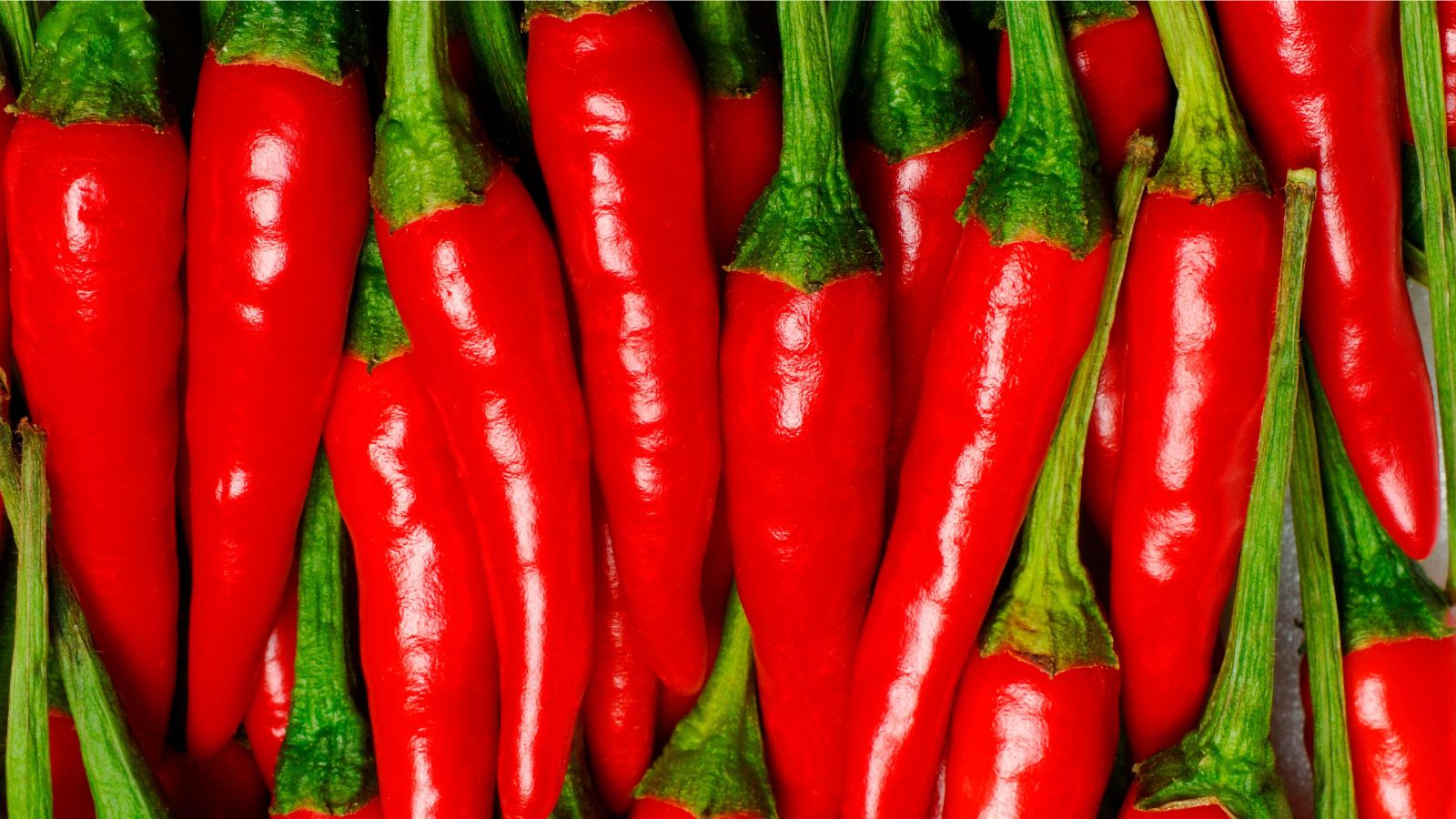When to pick cayenne peppers – experts explain the signs that tell you they're ripe
Cayenne peppers are best picked when perfectly ripe, so spotting when they ready to be harvested is important for cooks and gardeners alike


For lovers of spicy food, cayenne peppers are the perfect plant to grow at home. They can be picked and eaten raw or dried, or cooked into a hot sauce.
Most important? Ensuring they're ripe before harvesting since like other types of chilli peppers, ripe cayenne peppers are sweeter and taste better.
Below, our experts tell you exactly when to pick cayenne peppers for the best flavor.
When should you harvest cayenne peppers?

Determining the ideal time to harvest your cayenne peppers is not black and white; although there are clear times when the pepper is at its most ripe when you pick yours is all a matter of personal taste.
Gene Caballero, gardener, lawn care expert and co-founder of GreenPal says, 'It's worth noting that you can harvest cayenne peppers at any stage. Young, green cayennes have a milder flavor, while mature, red cayennes are hotter and more flavorful. Whether you pick them early or late depends on your heat preference and intended use.'
It is important to pick cayenne peppers when you are ready to eat them; doing so will encourage the plant to produce more.
Just like when you are picking jalapeño peppers, there are three distinguishable ways to know when cayenne peppers are ripe and ready to be picked. The first is their size.
Design expertise in your inbox – from inspiring decorating ideas and beautiful celebrity homes to practical gardening advice and shopping round-ups.

Gene Caballero is the co-founder of GreenPal, with over 25 years experience in the landscaping industry. GreenPal a platform that connects clients to landscapers in the US and is based in Nashville.
When their size is right
Ilia Mundut, founder & CEO of HeftyBerry advises, 'Most cayenne peppers are around 4 to 6 inches long when mature. However, the size can vary depending on the specific variety.'
Although their size is important, it won't be the only indication of the plant's readiness to be harvested, since cayenne peppers can take up to a month to change color from green to their ripe color after reaching full size.

Ilia Mundut is the Founder & CEO of HeftyBerry, a store for wreaths, interior decor, and home and garden designs.
When their color is right
A ripe pepper will be a vibrant color (this will be red in most cases) with firm, waxy skin. It's important to know what variety of cayenne pepper you are growing in order to understand what color it should be turning since the different varieties include red, orange and yellow peppers.
How firm it feels
'A gentle squeeze is your best friend when assessing readiness,' says Itamar Ben Dor, founder of Green-Life.blog. 'Ripe cayenne peppers should feel firm to the touch. If they're slightly soft, it might be an indication of over-ripeness or even rotting, so aim for that pleasant firmness.'
If cayenne peppers are left too long without being harvested they will start to dry out and start to wrinkle.
What impacts how quickly cayenne peppers ripen?

Originating from West India and Central and South America, cayenne peppers have a long growing season and will normally reach maturity in 70 to 100 days from seeding. The general rule? The larger the cayenne pepper, the longer it will take to ripen.
The time a cayenne pepper takes to mature will also depend on the climate since cayenne peppers prefer hot temperatures, whereas extreme temperatures may damage and stunt growth.
Finally, make sure to monitor for pests damaging your cayenne peppers. As they start to ripen, the fluids produced by the pepper's leaves attract aphids. If not prevented, these bugs can harm the peppers, subsequently stopping the cayenne peppers from fully ripening.
FAQs
How many cayenne peppers will grow on one plant?
A cayenne pepper plant normally produces anywhere from 10 to 30 pods at a time. Cayenne peppers will continue to produce new peppers throughout their growing season as long as they are continuously harvested. David Cohen, plant expert and CEO of Badais International says, 'I advise harvesting cayenne peppers individually as they ripen, using clean pruning shears,' since this will mean you continuously have new peppers growing.
Cayenne peppers are great for gardeners who love spice, even if it is a milder flavor since they can be used in a range of different ways depending on when you harvest them and how ripe you allow them to get. Remember, smaller cayenne peppers are usually hotter, so if you're making hot sauce go for the smaller and vibrantly red varieties.

Lola Houlton is a news writer for Homes & Gardens. She has been writing content for Future PLC for the past six years, in particular Homes & Gardens, Real Homes and GardeningEtc. She writes on a broad range of subjects, including practical household advice, recipe articles, and product reviews, working closely with experts in their fields to cover everything from heating to home organization through to house plants. Lola is a graduate, who completed her degree in Psychology at the University of Sussex. She has also spent some time working at the BBC.